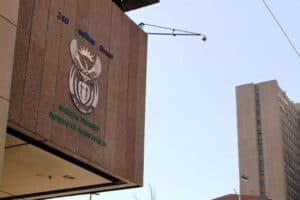SAA reportedly made a R500 million profit in the financial year ending March.

Has South African Airways (SAA) actually made a real operating profit after years of bleeding red ink – or is it financial sleight of hand?
Despite National Treasury announcing the airline had made a profit, not a single organ of the state has been willing or able to substantiate it.
Instead, Treasury – who initially boasted about the achievement – passed the buck to SAA and the public enterprises department, which both claimed all will be revealed in the company’s annual financial statements.
R500 million
And there hasn’t been a set of those for five years. SAA reportedly made a R500 million profit in the financial year ending March.
But Treasury would not say whether it was nett, or an operating profit. In fact, it said nothing. SAA deflected to its annual financials and Ellis Mnyandu of public enterprises simply said the department will share financials only once an audit, covering half a decade of zero reporting, is completed.
“SAA forecasts are continually reviewed based on market dynamics and routes going forward; the aim is not to forecast losses, but profit, as SAA finances improve,” he said. An aviation insider questioned why such glowingly positive news would be buried, as it was good news for the country, and he thought SAA and government would be the loudest voice in celebrating it.
‘Hogwash’
Unless, he added, it was “hogwash”. The Democratic Alliance’s Alf Lees was disbelieving. “It is possible that, given the high ticket prices, SAA may have shown an operating profit.
“However, the SAA group is once again over-staffed and subsidiaries Air Chefs and SAA Technical (SAAT) will no doubt be running at massive losses.
It is all a big secret kept from parliament and taxpayers, who have poured billions into keeping SAA afloat and funding the massive levels of maladministration, corruption, fraud and ANC dogmatic ideology,” he said.
SAA exited business rescue with 1 200 staff. Within 18 months it ballooned to 2 000 heads. None of the maths adds up.
If SAA Group was R500 million in the black, while the defunct Mango lost R66 million, Air Chefs about R12 million and SAA itself showed a R33 million profit, that would leave SAAT as the goose that laid the golden egg for the group with a R455-million profit.
This turnaround would be of major historic proportions, considering it was in a loss-making position as recently as February with a R2.7 million loss, according to Treasury at the time, when the SAA Group loss was R50 million.
NOW READ: Calls for new SAA board to be put on ice, probe into Takatso deal
Regular client
Sources said SAA was the only regular client of SAAT, with adhoc business making up the rest of its revenue.
An insider said SAA’s fleet of seven aircraft could hardly turn the technical subsidiary into a profitable entity overnight.
Guy Leitch, aviation analyst and editor of SA Flyer Magazine, suggested that profit was simply an accounting concept and that, while the airline may have been trading profitably, the group’s past performance suggests that it still runs at a loss, given previous performance of AirChefs and SAAT.
In a report to the standing committee on public accounts (Scopa) last November, SAA claimed to have operated 4 125 flights in a year, with an average of 2 000 bookings a day and a grand total of 700 000 bookings in the period between resuming operations in September 2021 and November 2022.
SAA also claimed its share of the domestic market was 16% in a Scopa presentation last month. However, out of the 11.6 million passengers who travelled over the same period as the airline’s review period, only six percent flew SAA domestically.
A source said SAA’s domestic bookings were closer to 669 402 passengers in its last fiscal and sold an average fare of around R1 400 per ticket.
That translates into R937 162 800 in revenue – a 3.5% profit margin triple that of Iata’s 1.3% global airline margin forecast for the year. Numbers like that makes SAA extremely hot property if it can be substantiated, but nobody did.
And the airline remains for sale to Takatso at R51 of a R100 total value of equity. Lees reckoned SAA’s current market value is closer to R7 billion.
He pegged it at that amount based on the premise that all assets, such as fixed property, routes, inventories, and potential profits, are considered.
Five years ago, SAA’s financials indicated assets of R15 billion, and National Treasury dropped its estimation of the company to a net equity value of just R1 billion.
Takatso deal
The Takatso deal remains shrouded in mystery and after the Competition Commission gave it a conditional green light, the tribunal was set up to formalise their heir apparent’s purchase of SAA this week.
Thereafter, Takatso will be without minority shareholders and aviation experts Gidon Novick and Global Airways.
Mnyandu said: “Any notion that the exit of Takatso minorities will somehow nullify or void the proposed transaction is misplaced. There is no variance from the criteria or the requirements that were set by the department.
“Takatso will ensure that SAA is infused with the requisite depth of experience and expertise in aviation, equal or even beyond that which would have been provided by the minorities that have opted to sell their interest in the consortium.”
Takatso did not respond to The Citizen’s questions about holding any other aviation expertise, nor where the R3.5 billion in working capital was. Sources suggest SAA plans to raise the capital through debt by selling billions in assets purchased for R51 from taxpayers. – [email protected]
ALSO READ: Competition Tribunal hearing into the SAA-Takatso merger underway






